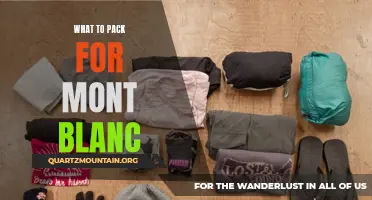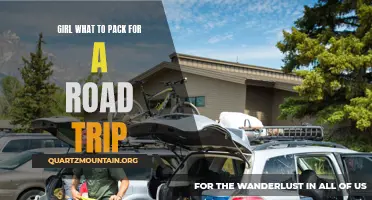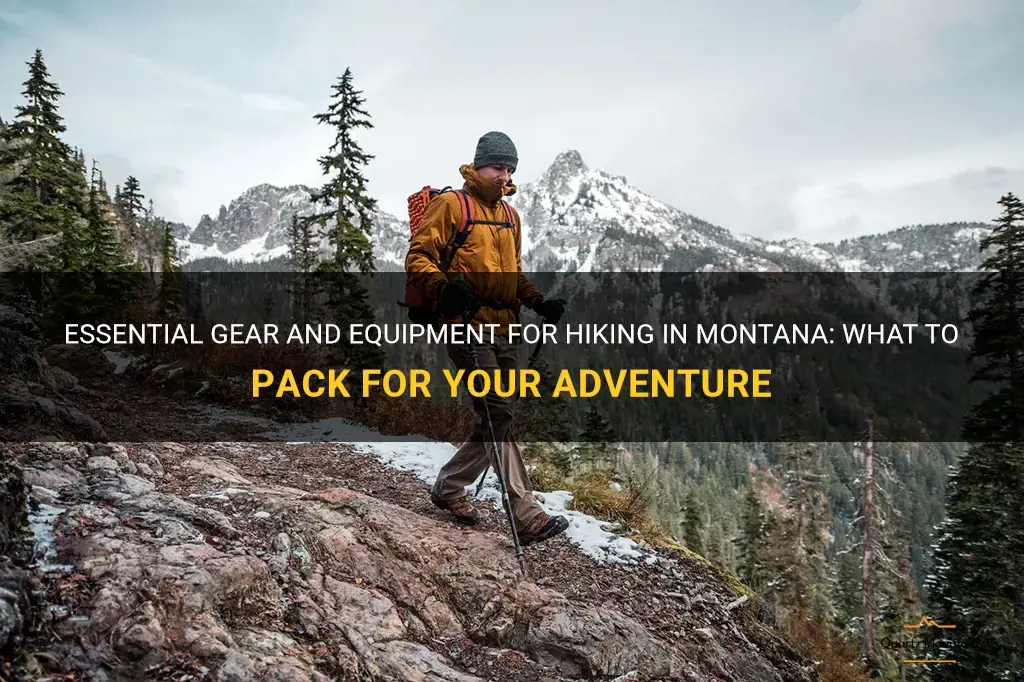
If you're planning a hiking adventure in Montana, you're in for a treat. With its stunning mountain ranges, picturesque lakes, and breathtaking landscapes, Montana offers some of the most spectacular hiking trails in the United States. But before you embark on your journey, it's important to make sure you have the right gear and equipment. In this guide, we'll walk you through the essential items you need to pack for your hiking adventure in Montana, ensuring you have a safe and enjoyable experience in the great outdoors.
What You'll Learn
- What are the essential clothing items to pack for hiking in Montana?
- What type of footwear is recommended for hiking in Montana's rugged terrain?
- Are there any specific gear or equipment items that are necessary for hiking in Montana?
- Are there any extra precautions or gear needed for hiking in Montana's changing weather conditions?
- What food and water supplies should be packed for a day hike in Montana?

What are the essential clothing items to pack for hiking in Montana?
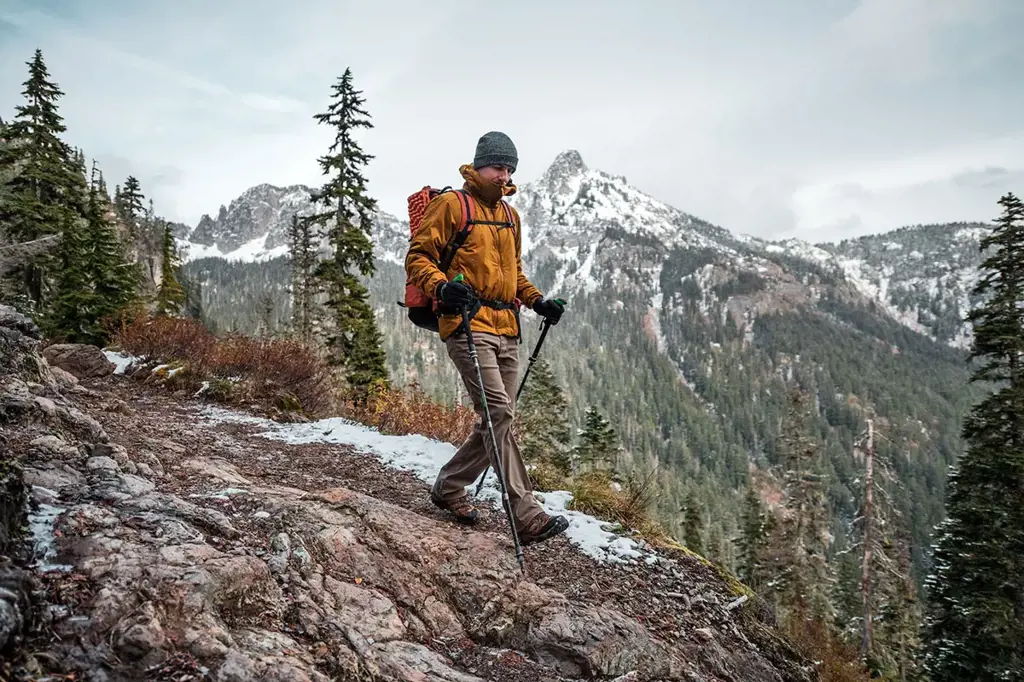
When planning a hiking trip in Montana, it is essential to pack the right clothing items to ensure a comfortable and safe experience. The weather in Montana can be unpredictable, with varying temperatures and potential for rain or snow depending on the season and elevation. Here are some essential clothing items to pack for hiking in Montana:
- Hiking boots: A sturdy pair of hiking boots with good ankle support is a must. Montana's trails can be rugged and uneven, so having proper footwear is crucial. Look for boots with a waterproof or water-resistant material to keep your feet dry in case of rain or snow.
- Moisture-wicking base layers: Layering is key when hiking in Montana, as temperatures can fluctuate throughout the day. Start with a moisture-wicking base layer that will keep you dry and comfortable by wicking away sweat from your skin. This could be a lightweight, long-sleeved shirt and leggings.
- Insulating mid-layers: Depending on the season, you may need an insulating mid-layer to provide warmth. This could be a fleece or down jacket that can be easily packed and layered over your base layer when temperatures drop. Opt for a lightweight and compressible option to save space in your backpack.
- Waterproof and windproof outer layers: Montana's weather can change quickly, so it's crucial to have a waterproof and windproof outer layer. Look for a jacket and pants made from a breathable and waterproof material such as Gore-Tex. These layers will protect you from rain, snow, and wind while still allowing moisture to escape.
- Hiking pants: Choose lightweight and quick-drying hiking pants that offer mobility and protection against trail obstacles. Look for pants with built-in UV protection to shield your legs from the sun's harmful rays. Additionally, consider pants with zip-off legs for added versatility in changing weather conditions.
- Hats and gloves: Protecting your extremities is essential when hiking in Montana. Pack a hat that provides shade from the sun and warmth in colder temperatures. Additionally, bring gloves to protect your hands from wind and cold. Look for gloves made from a material that allows for dexterity, so you can still use your hands easily while wearing them.
- Sunglasses: Montana is known for its clear blue skies and high elevation, which means the sun's rays can be intense. Don't forget to pack a pair of sunglasses with UV protection to protect your eyes from harmful UV rays and glare.
- Socks: Invest in a good pair of hiking socks made from moisture-wicking and breathable materials. Avoid cotton socks, as they tend to retain moisture and can lead to blisters. Look for socks with proper cushioning and support to keep your feet comfortable on long hikes.
- Gaiters: Gaiters are optional but can be helpful in certain conditions. They are designed to cover your ankles and lower legs to keep debris, snow, and water out of your boots. Consider bringing gaiters if you plan to hike in muddy or snowy conditions to keep your feet dry and comfortable.
Remember to check the weather forecast and trail conditions before your hike and adjust your clothing accordingly. It's always better to pack extra layers and be prepared for unpredictable weather changes. By packing the right clothing items, you can ensure a comfortable and enjoyable hiking experience in the beautiful wilderness of Montana.
Essential Items to Pack for a 7-Day Mediterranean Cruise
You may want to see also

What type of footwear is recommended for hiking in Montana's rugged terrain?
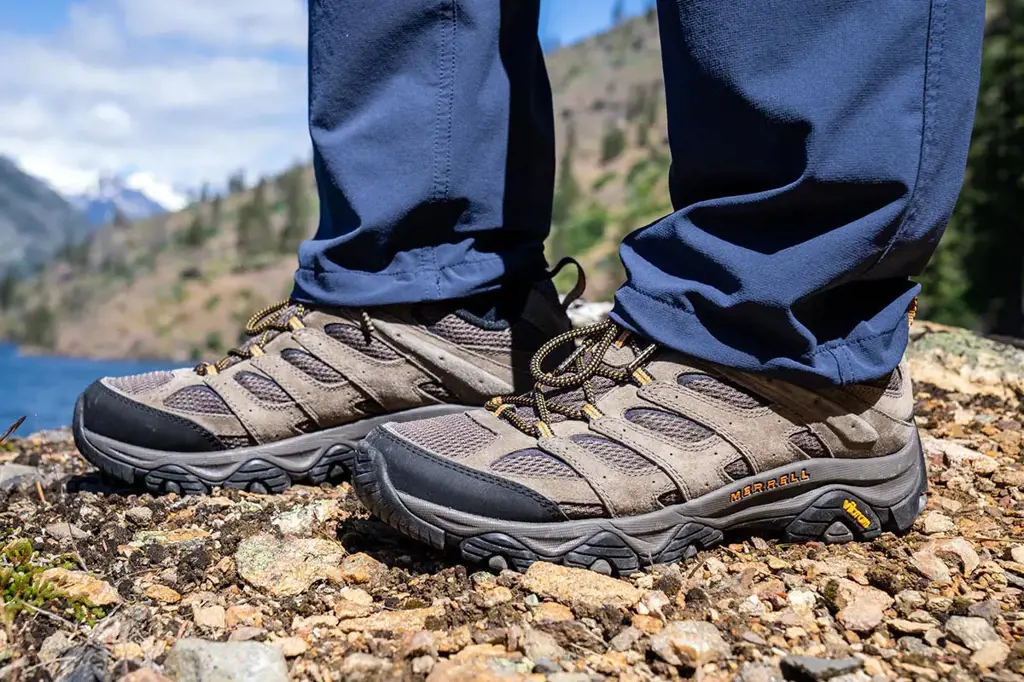
Hiking in Montana's rugged terrain can be a thrilling and challenging adventure. With its diverse landscapes, including mountains, forests, and prairies, it is important to have the right footwear to navigate these terrains safely and comfortably. The type of footwear recommended for hiking in Montana's rugged terrain depends on several factors, including the season, weather conditions, and personal preferences. In this article, we will explore the different types of footwear that are ideal for hiking in Montana's rugged terrain.
- Sturdy Hiking Boots: When hiking in Montana's rugged terrain, a pair of sturdy hiking boots is a must-have. Look for boots that provide ankle support and have a rugged sole for better traction on uneven surfaces. These boots should also be waterproof to keep your feet dry in wet conditions and have a breathable lining to prevent excessive sweating.
- Trail Running Shoes: If you prefer a lighter option, trail running shoes can be a good alternative to hiking boots. They offer similar stability and traction but are lighter in weight, making them more suitable for shorter hikes or well-maintained trails. However, trail running shoes may not provide as much ankle support as hiking boots, so they may not be ideal for more rugged or technical terrains.
- Gaiters: Regardless of the footwear you choose, it is essential to wear gaiters when hiking in Montana's rugged terrain. Gaiters are protective coverings that go over your shoes or boots and extend up to your lower leg. They are particularly useful in preventing debris, such as rocks, mud, and snow, from entering your footwear. Gaiters also provide an extra layer of protection against thorny bushes or snake bites.
- Mountaineering Boots: If you plan on undertaking more advanced trails or climbing in Montana's rugged terrain, consider investing in a pair of mountaineering boots. These boots are specially designed for technical hikes, with features such as crampon compatibility and enhanced insulation for extreme cold weather conditions. However, bear in mind that mountaineering boots are considerably heavier and less comfortable for long-distance hiking than hiking boots or trail running shoes.
- Sandals or Water Shoes: Depending on the season and the trail conditions, you may come across water crossings or sections of the hike that require wading through rivers. In such cases, having waterproof sandals or water shoes can be beneficial. These options provide excellent traction on wet surfaces and allow for quick drying, minimizing discomfort and blisters caused by wet socks and shoes.
Regardless of the footwear you choose, it is essential to break them in before embarking on your hiking adventure in Montana's rugged terrain. New shoes or boots can cause discomfort, blisters, or foot pain if not properly broken in. Wear them on shorter hikes or around town to let your feet adjust to the new footwear gradually.
In conclusion, the type of footwear recommended for hiking in Montana's rugged terrain depends on various factors. Sturdy hiking boots remain the go-to choice for most hikers, providing ankle support, traction, and protection against the elements. Trail running shoes can be a lighter option, suitable for shorter hikes or well-maintained trails. For more advanced hikes or mountaineering, consider investing in mountaineering boots. Additionally, gaiters, sandals, or water shoes can be useful in specific situations such as water crossings or extreme weather conditions. Ultimately, the choice of footwear should be based on personal preferences, trail conditions, and the type of hiking adventure you have planned.
The Best Containers for Storing Bread: A Guide for Bakers
You may want to see also

Are there any specific gear or equipment items that are necessary for hiking in Montana?
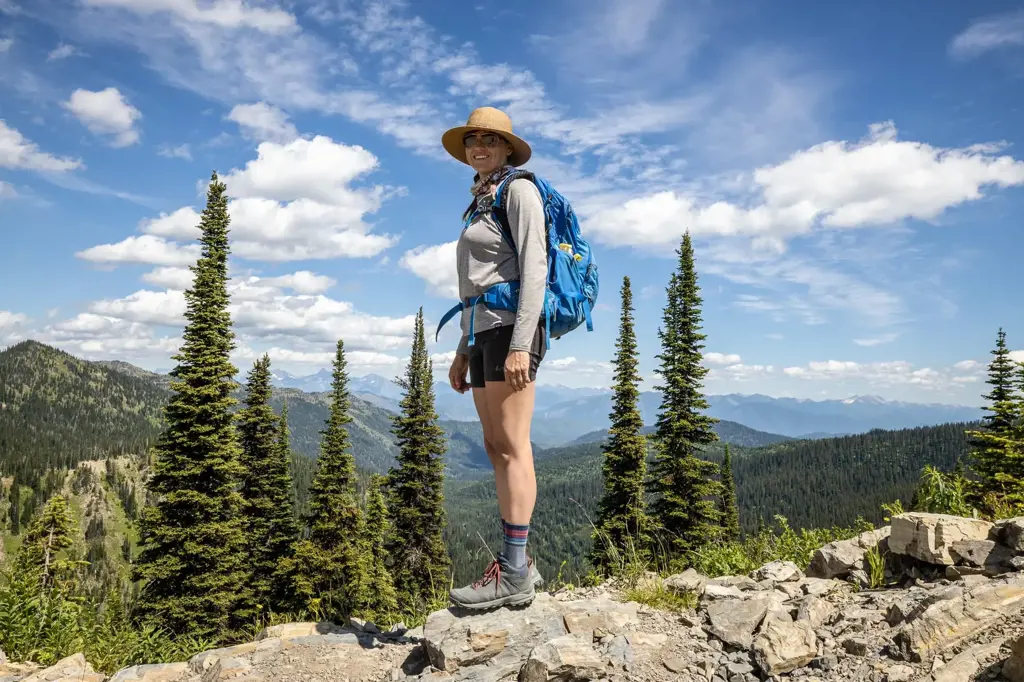
When it comes to hiking in Montana, it is essential to have the right gear and equipment to ensure a safe and enjoyable experience. The state's diverse landscape, which includes mountains, forests, and wilderness areas, requires hikers to be prepared for varying weather conditions and difficult terrains. Here are some specific gear and equipment items that are necessary for hiking in Montana:
- Hiking boots: Having a pair of sturdy and comfortable hiking boots is crucial for navigating the rugged terrain of Montana. Look for boots that provide good ankle support and have a durable sole to withstand rocky surfaces and muddy trails.
- Backpack: A reliable backpack is necessary for carrying all your hiking essentials, such as water, food, extra clothing, and a first aid kit. Choose a backpack with enough capacity to hold all your gear and that is comfortable to wear for long periods.
- Water bottles and hydration system: Staying hydrated is essential during hikes, especially in Montana's dry and arid conditions. Carry multiple water bottles or use a hydration system, such as a Camelbak, to ensure a steady supply of water throughout your hike.
- Clothing layers: Montana's weather can be unpredictable, with temperature changes and sudden storms. Dress in layers to adapt to changing conditions. Start with a moisture-wicking base layer, add insulating layers like fleece or a lightweight down jacket, and finish with a waterproof and breathable outer layer.
- Navigation tools: Due to the expansive and remote nature of Montana's wilderness, it is important to have reliable navigation tools. Carry a detailed topographic map of the area you're hiking in, a compass, and a reliable GPS device. Familiarize yourself with using these tools before your hike.
- Headlamp or flashlight: Even if you plan to finish your hike before sunset, it is essential to carry a headlamp or flashlight in case of unexpected delays or emergencies. Make sure to pack extra batteries as well.
- Trekking poles: Trekking poles can provide added stability and reduce strain on your joints, especially during challenging descents or on uneven terrain. Consider using trekking poles for added support and balance during your hikes in Montana.
- Insect repellent and sunscreen: Montana is home to various insects, including mosquitoes and ticks, so it is important to protect yourself from bites. Apply insect repellent and wear long-sleeved shirts and pants to minimize exposed skin. Additionally, protect your skin from harmful UV rays by applying sunscreen with a high SPF rating.
- Emergency whistle and signaling device: In case of an emergency or getting lost, having an emergency whistle and signaling device can greatly increase your chances of being located by search and rescue teams. Attach these items to your backpack or keep them easily accessible.
Remember, this is not an exhaustive list, and the gear and equipment you need may vary depending on the length and difficulty of your hike, as well as your personal preferences. It is always a good idea to research your specific hiking route and the current conditions before heading out. Consult with experienced hikers, local outdoor stores, or hiking organizations for further guidance on the gear and equipment you should bring for your specific hike in Montana.
What Items to Pack for a Summer Trip to Iceland: Your Ultimate Guide
You may want to see also

Are there any extra precautions or gear needed for hiking in Montana's changing weather conditions?
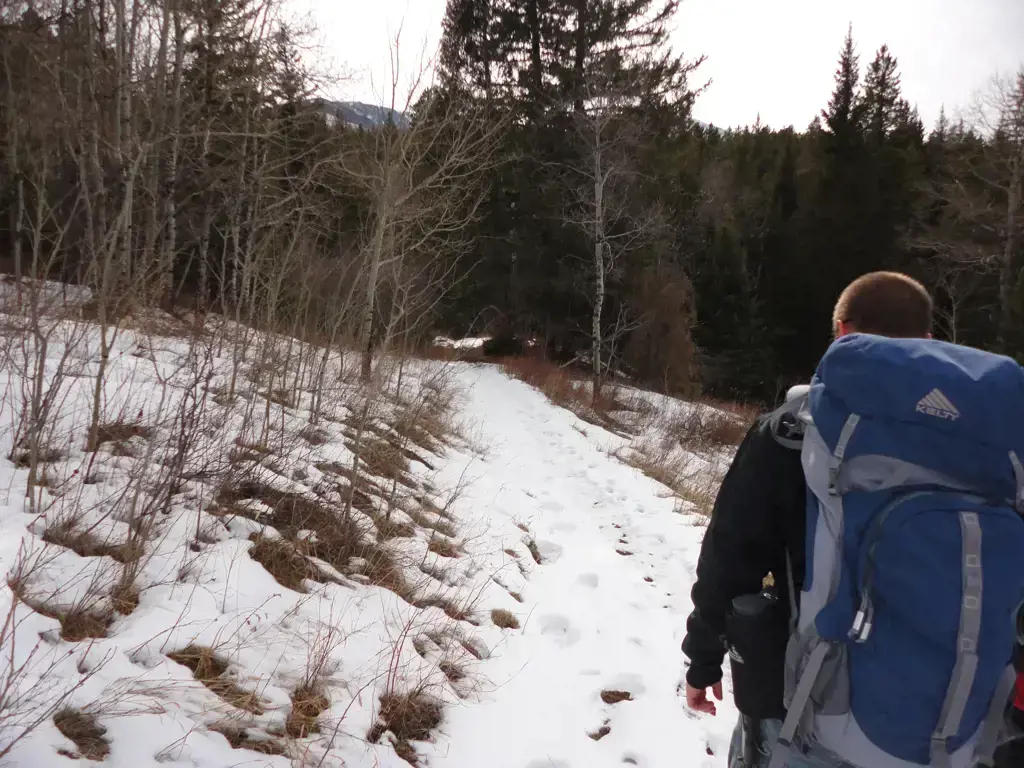
Montana is known for its diverse and changing weather conditions, and hikers need to take proper precautions and have the right gear to ensure their safety and comfort. The following are some tips on how to hike in Montana's changing weather conditions:
- Check the Weather Forecast: Before heading out on a hike, always check the weather forecast for the area you plan to hike in. Montana's weather can be unpredictable, and it is important to be prepared for any changes. Make sure to check the forecast for the duration of your hike, as conditions can change rapidly.
- Layer Your Clothing: Dressing in layers is essential for hiking in Montana's changing weather. Start with a moisture-wicking base layer to keep you dry, then add a mid-layer for insulation, and finish with a waterproof and windproof outer layer. This will allow you to adjust your clothing as the temperature and weather conditions change.
- Bring Extra Gear: In addition to the essential hiking gear such as a backpack, water, and food, it is important to bring extra gear for changing weather conditions. This includes a hat, gloves, and a buff or neck gaiter to protect your face and neck from the wind and cold. It is also a good idea to bring extra socks in case your feet get wet.
- Wear Sturdy Footwear: Montana's terrain can be rugged and uneven, so it is important to wear sturdy and waterproof hiking boots. This will provide traction and support, especially in wet or snowy conditions. Consider using gaiters to keep snow and debris out of your boots.
- Carry Navigation Tools: Montana's changing weather conditions can sometimes affect visibility, making it important to carry navigation tools such as a compass and map or a GPS device. Make sure you know how to use these tools before heading out on your hike.
- Be Aware of Wildlife: Montana is home to a variety of wildlife, including bears and mountain lions. Be knowledgeable about the wildlife in the area you are hiking and know how to react if you encounter them. Carry bear spray and know how to use it, and make noise as you hike to alert wildlife to your presence.
- Stay Hydrated and Fuelled: In changing weather conditions, it is important to stay hydrated and fuelled. Carry enough water and snacks to keep you energized throughout your hike. In colder conditions, it is easy to forget to drink water, but it is still important to stay hydrated.
- Know Your Limits: Finally, be aware of your own hiking abilities and limitations. Montana's changing weather conditions can make hiking more challenging. If you are unsure about your ability to hike in certain conditions, consider choosing a different trail or hiking with a more experienced partner.
In conclusion, hiking in Montana's changing weather conditions requires extra precautions and gear. By checking the weather forecast, dressing in layers, bringing extra gear, wearing sturdy footwear, carrying navigation tools, being aware of wildlife, staying hydrated and fuelled, and knowing your limits, you can ensure a safe and enjoyable hiking experience in Montana. Always prioritize safety and be prepared for any weather changes that may occur during your hike.
Essentials for a Memorable Stay at Great Wolf Lodge Grapevine
You may want to see also

What food and water supplies should be packed for a day hike in Montana?
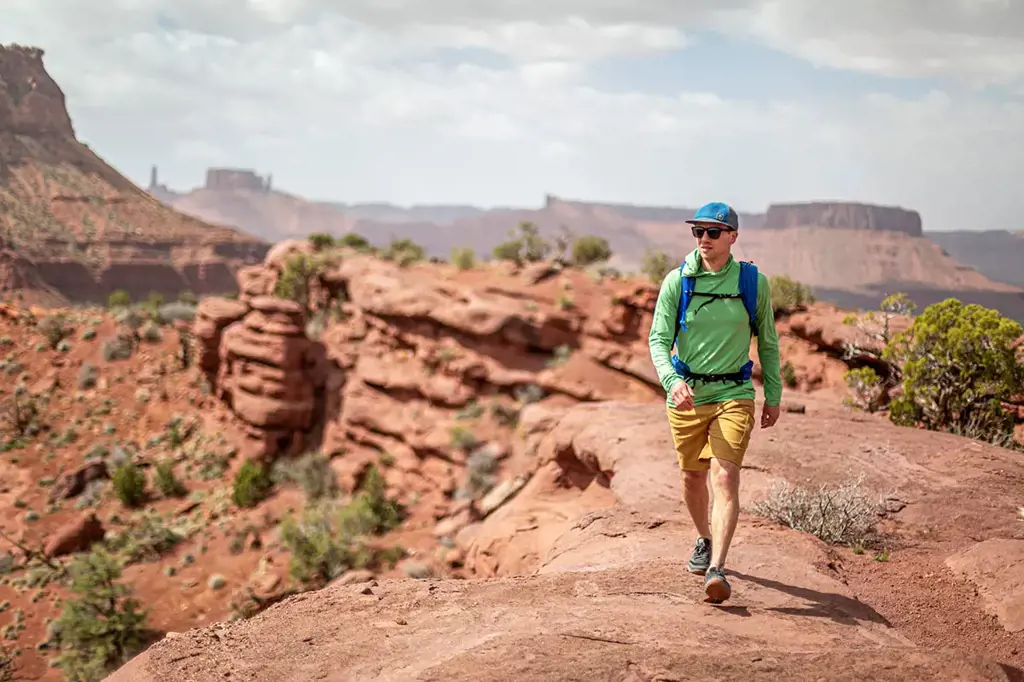
Montana is known for its vast and beautiful landscapes, making it a popular destination for outdoor enthusiasts and hikers. When planning a day hike in Montana, it is important to pack the right food and water supplies to ensure a safe and enjoyable experience. This article will provide you with a scientific approach, based on research and experience, to help you determine what to pack for your day hike in Montana.
Water is the most essential item to pack for any hike, as staying hydrated is crucial for your overall well-being and performance. The general rule of thumb is to drink at least half a liter of water per hour of hiking. However, this can vary depending on factors such as temperature, humidity, and intensity of the hike. It is recommended to bring a water bottle or hydration bladder with a capacity of at least 2 liters to ensure you have enough water to last the entire day. Additionally, consider bringing a water filtration device or purifying tablets if you plan to refill your water from natural sources such as streams or lakes.
In terms of food, it is important to bring lightweight, energy-rich snacks that provide a good balance of carbohydrates, protein, and fats. These nutrients are vital for sustaining energy levels and preventing fatigue during your hike. Some examples of suitable snacks include trail mix, energy bars, dried fruits, nuts, and jerky. Make sure to pack enough food to sustain yourself throughout the day, but also consider the weight and space limitations of your backpack.
Another important consideration when packing food for a day hike in Montana is the potential for wildlife encounters. Be aware that bears and other wildlife can be attracted to the smell of food, so it is crucial to store your food in odor-proof containers or bear-resistant food canisters. This not only protects you from potential wildlife encounters but also helps to preserve the natural habitat and prevent habituation of animals to human food.
Lastly, it is important to consider any dietary restrictions or preferences you may have when packing food for your hike. If you have specific dietary needs, make sure to research and find suitable alternatives or pack your own meals accordingly. It is always a good idea to pack an extra snack or two in case of unexpected delays or emergencies.
In conclusion, when planning a day hike in Montana, it is important to pack enough water to stay hydrated throughout the hike. Make sure to bring a water bottle or hydration bladder with a capacity of at least 2 liters. Additionally, pack lightweight, energy-rich snacks that provide a good balance of carbohydrates, protein, and fats. Consider potential wildlife encounters and make use of odor-proof containers or bear-resistant food canisters. Lastly, take into account any dietary restrictions or preferences you may have and pack accordingly. By following these guidelines, you will be well-prepared to enjoy your day hike in Montana.
Essential Packing Tips for Your Avalon Waterways Adventure
You may want to see also
Frequently asked questions
When hiking in Montana, it is important to pack several essential items. These include a good pair of hiking boots, a map and compass or GPS device, plenty of water, food and snacks, sunscreen and bug spray, a first aid kit, and appropriate clothing layers for changing weather conditions.
Montana's weather can be unpredictable, so it is important to be prepared with clothing layers for varying conditions. It is recommended to bring a moisture-wicking base layer, a warm mid layer, a waterproof and windproof outer layer, and extra socks. Additionally, a hat, gloves, and a lightweight scarf or neck gaiter can help protect against cold temperatures and wind.
When choosing a backpack for hiking in Montana, it is important to consider the duration and difficulty of your hike. For day hikes, a small to medium-sized daypack with good padding and support is suitable. For longer hikes or backpacking trips, a larger backpack with a capacity of 40-70 liters may be necessary to carry clothing, food, water, and camping gear.
Staying hydrated is crucial when hiking in Montana's dry and sometimes high-altitude environment. It is recommended to bring at least 2-3 liters of water per person for a full day of hiking. Consider using a hydration bladder or water bottles that are easy to access while on the trail. It is also a good idea to have a water filtration system or purification tablets in case you need to source water from streams or lakes.
Along with the essential items mentioned earlier, there are some additional items worth considering. These include binoculars for wildlife spotting, a camera or smartphone for capturing the beautiful landscapes, trekking poles for added stability and support, and a small personal locator beacon for emergencies. It is also important to pack proper trail etiquette by carrying out any trash and respecting the natural environment.






